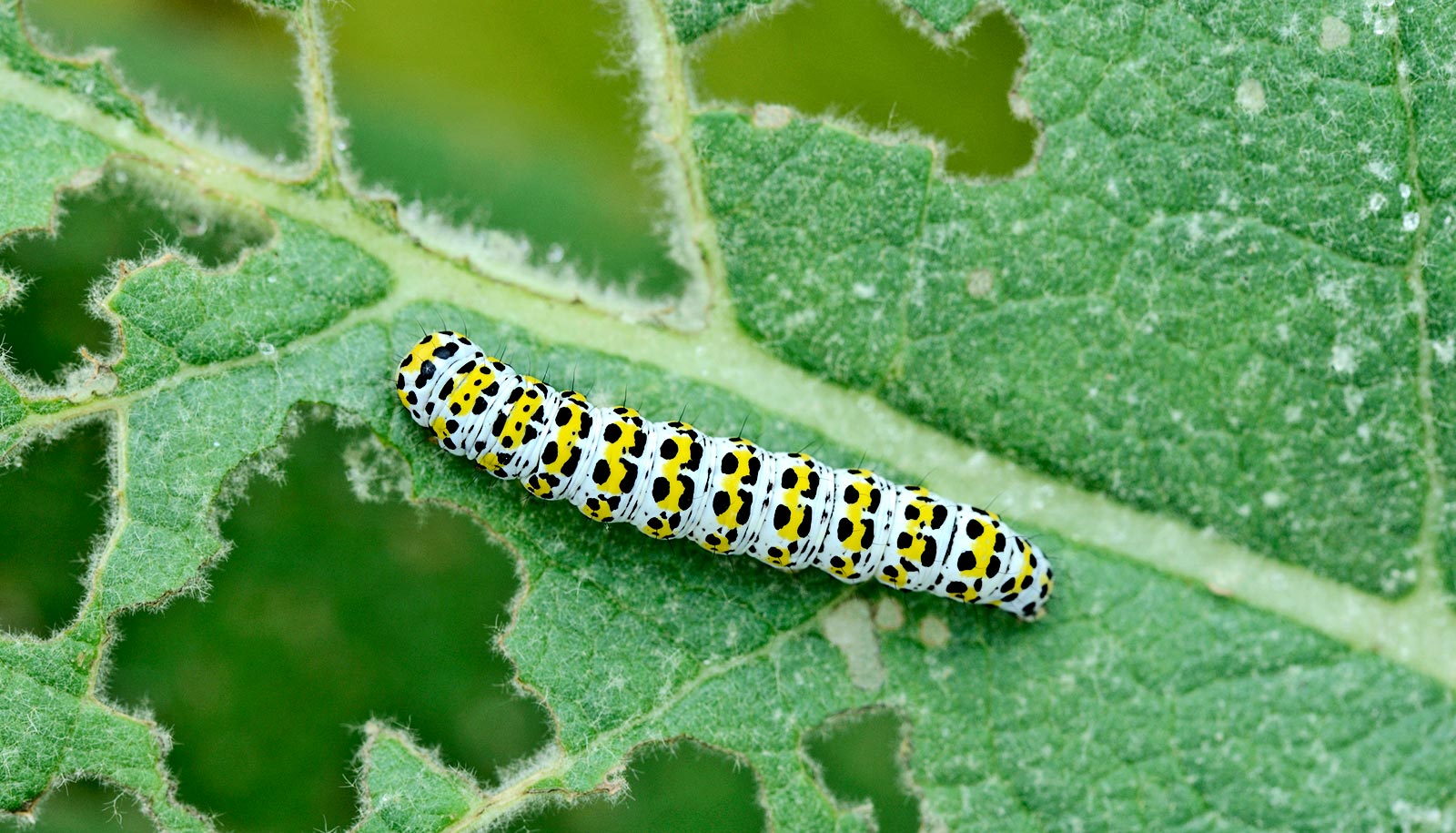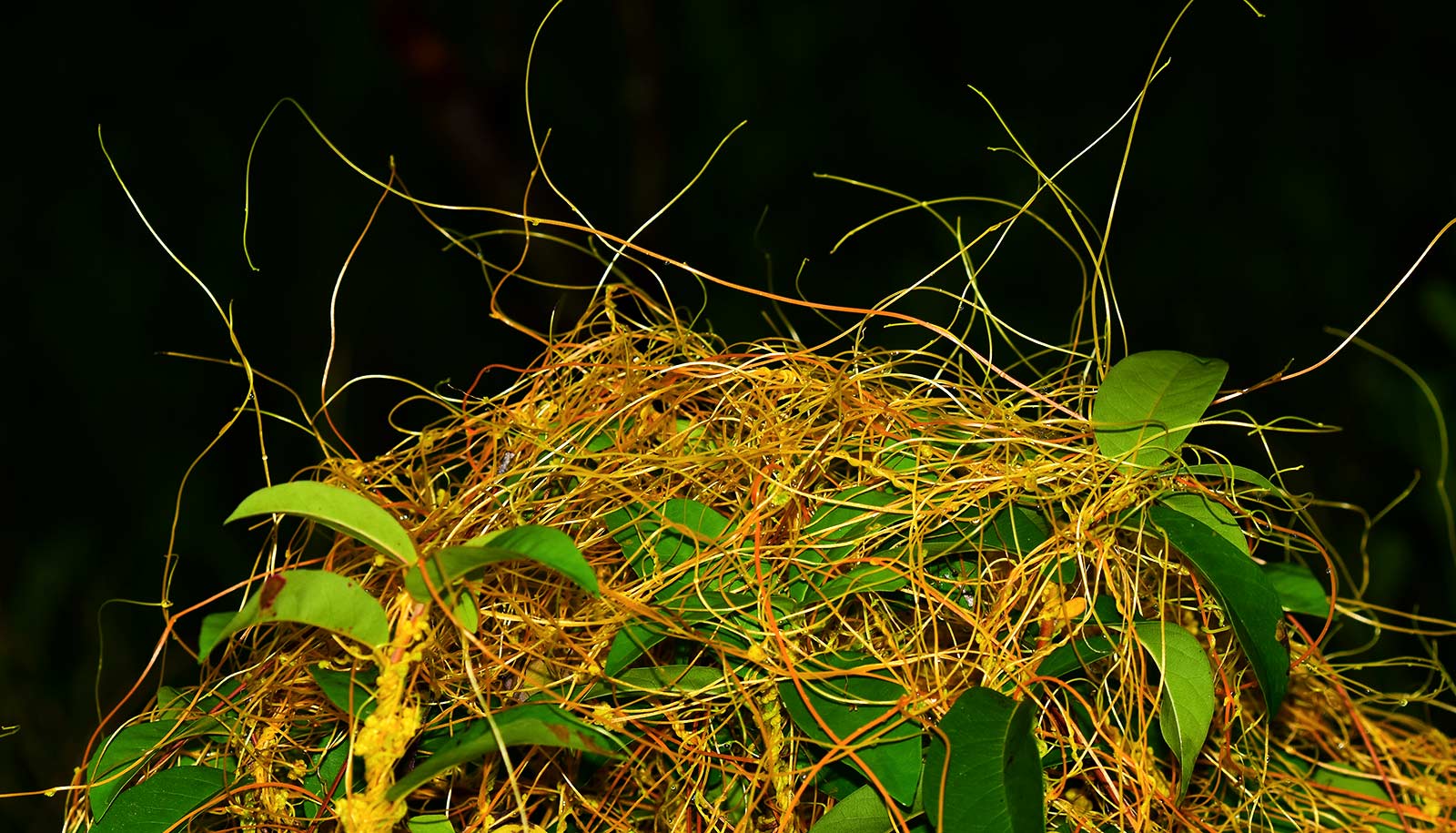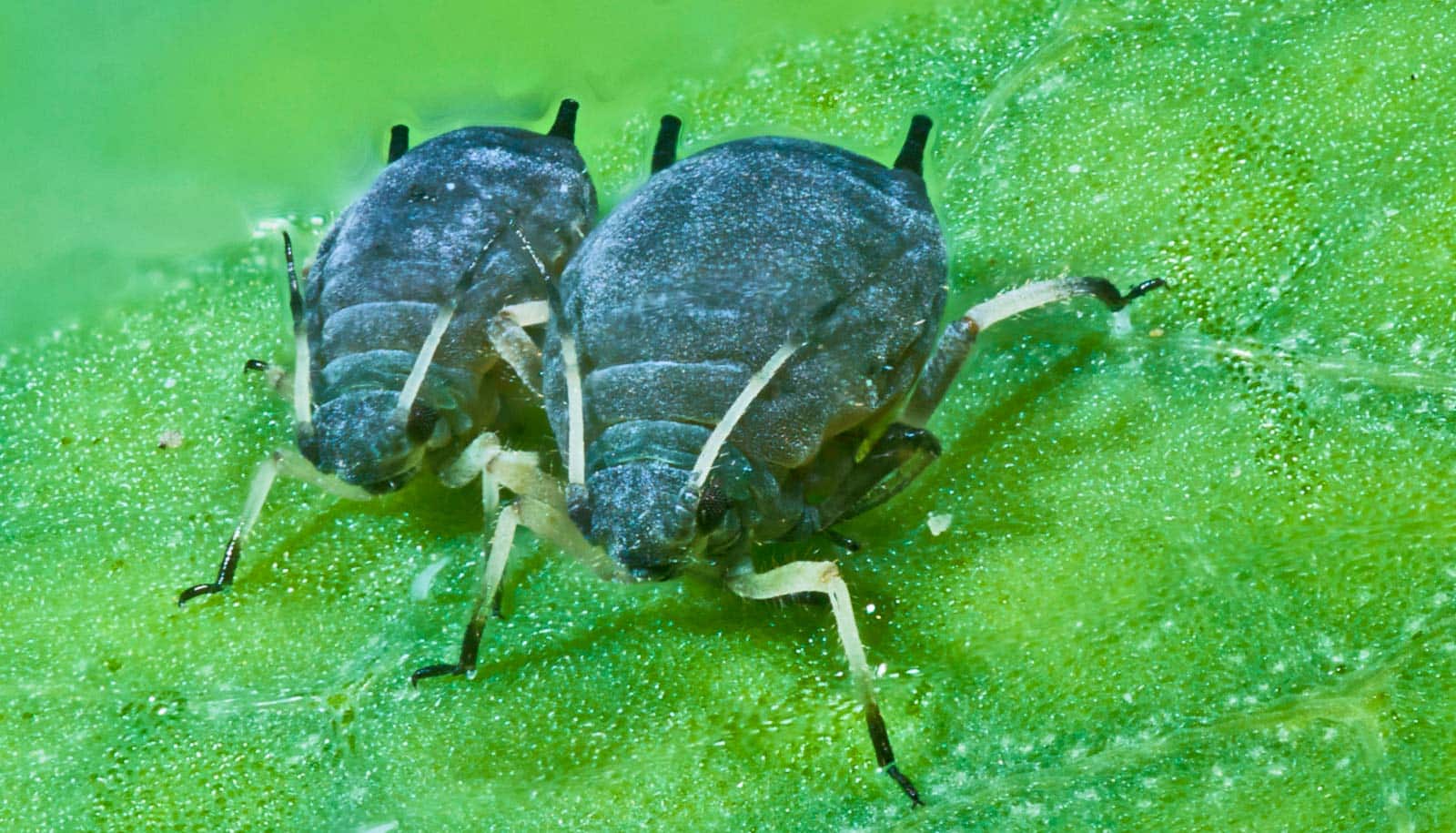New research reveals how plant communication systems respond to threats from hungry critters.
The results show that once wounded, plants use calcium signals to warn distant tissues of future attacks.
In one video, you can see a hungry caterpillar, first working around a leaf’s edges, approaching the base of the leaf and, with one last bite, severing it from the rest of the plant. Within seconds, a blaze of fluorescent light washes over the other leaves, a signal that they should prepare for impending attacks by the caterpillar or its kin.

That fluorescent light tracks calcium as it zips across the plant’s tissues, providing an electrical and chemical signal of a threat. The video is part of a study that shows how glutamate—an abundant neurotransmitter in animals—activates this wave of calcium when the plant is wounded.
“For decades, it’s been known that leaf damage, inflicted by mechanical wounding or caterpillar munching, rapidly activates defense responses in distant, undamaged leaves of the plant,” says Gregg Howe, a professor at the Michigan State University Foundation. “But what triggers this rapid response has largely remained a mystery.”
Danger, danger!
When a leaf is wounded, an electrical charge races across the plant to warn other tissues of possible danger. But, what triggered that electric charge, and how it moved throughout the plant, were unknown.
Calcium is one candidate. It’s ubiquitous in cells and often acts as a signal of a changing environment. And because calcium carries a charge, it can produce an electrical signal. But it is hard to track because its concentration levels spike and dip quickly.
The researchers created a method to see the calcium in real time. They developed plants that produce a protein that fluoresces around calcium, letting the researchers track its presence and concentration. Then came caterpillar bites, scissor cuts, and crushing wounds.
In response to each kind of damage, the plants light up as calcium flows from the site of damage to other leaves. The signal moved quickly, about one millimeter per second, reaching out to distant leaves in just a couple minutes.
A few minutes later, levels of the defense hormone, jasmonate, spiked in those distant leaves. They were preparing the plant for future threats by producing noxious chemicals that ward off predators.
Connecting many dots
Previous research by Swiss scientist Ted Farmer has demonstrated that defense-related electrical signals depended on receptors for glutamate, an amino acid and a major neurotransmitter that facilitates long-range information exchange within animals and plants. Farmer showed that mutant plants missing glutamate receptors lost their electrical responses to threats.
Following up on that research, the researchers tested mutants that knock out the glutamate receptors. The calcium barely showed up on the videos as marginal flashes of light.
The results suggest that glutamate exiting a plant wound leads to rapid propagation of a calcium wave, which in turn leads to production of jasmonate and defense responses.
The study connects decades of research that have revealed how plants have evolved clever defense strategies, in the absence of a central nervous system. The research provides the best look yet at these plant communication systems that are usually hidden from view.
“We often think of plants as being passive and at the mercy of their environment. My jaw literally dropped when I first saw these videos from the Gilroy lab—they beautifully illustrate how active and complex plants really are,” Howe says.
Masatsugu Toyota led the work as a postdoctoral researcher in the lab of Simon Gilroy at University of Wisconsin-Madison. Gilroy and Toyota collaborated with Howe and researchers from the Japan Science and Technology Agency and the University of Missouri.
The National Science Foundation, Department of Energy, NASA, and Japan Science Technology Agency PRESTO, KAKENHI, funded the study.
Source: Michigan State University



